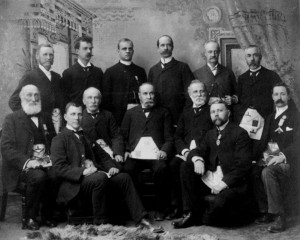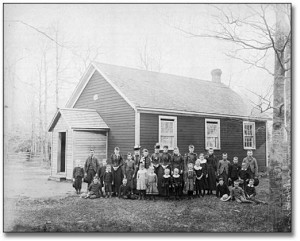I really appreciate Mike Konczal’s remarks in the Washington Post–and also the defenses printed elsewhere, and the commentary on Twitter of course. MY TITLE IS A SPONTANEOUS HASHTAG, Y’ALL! That’s totally the status symbol for all authors in the know these days.
Konczal’s given me an opportunity to clarify my vision in a way I did not do strongly enough before. I didn’t write DIY U to predict the future but to help set out the motivators for change and some of the possible paths of change. Still, I could have been clearer about what I would like to see happen.
I think what could help is something akin to a charter school movement for the people today found in community colleges, if they’re lucky, and in prison, if they’re not so lucky (Los Ni Ni, I hear they call them in Mexico). They need communities that offer several different kinds of support (Child care. Fix a flat tire. Resume writing), they need some form of job that provides both valuable experience and pay, and they need to form relationships with people, both peers and mentors, who can help them develop a bigger, brighter sense of themselves and their futures. And of course, they need access to knowledge resources and basic literacies, so they can pursue their directions in life as they start to find them.
I talked to Paul Schmitz at Public Allies about this. I’ve talked extensively to Dennis Littky at College Unbound, and Wick Sloane at Bunker Hill Community College (who should be the next president of the American Association of Community Colleges), and more recently Mike Marriner at Roadtrip Nation, who’s implementing a unique curriculum around, literally, finding your path. I’ve even heard the guy from CVS talk about a rare effort on the employer side of things. All of them are working feverishly on some independent version of this idea.
Some community colleges are already trying to do all these things, but to really get it going you’d need to shake up the funding in some way so that a Pell-eligible student could capture the same full subsidy by attending one of these charter-communities as they would if they were headed to the flagship state university.
Which brings me to the question of cost-shifting. I don’t know if zunguzungu missed the parts in the book (pp 59-61 and 73) where I talk to Jane Wellman of the Delta Cost Project and point out cost-shifting as the main reason that tuition has increased in public higher education. But the question is, what are you going to do about that? How do you move higher education up from the 5th or 6th state priority?
I don’t know. It seems really tough. What I was trying to show with the part about Chancellor Kirwan is that it could help if, instead of calling people “Thatcherites” and “Reaganites” if they try to talk to you about efficiency and productivity in higher education, you say, you know what? We can be proactive about cutting costs in a way that actually serves our students, and we’ll work together with the state legislatures to achieve our common goals.
And I’ll quote from an email I received yesterday:
“I am running for Assembly here in [state]. We have cut 30% from our higher education budget in the past 3 years and are looking at a 50% state budget deficit in 2011. I would love to talk with you about some of your ideas so that I can offer solutions without further cutting access or quality from our higher university system.”
On the casualization of academic labor: I’m agin’ it. I’ve been telling people for 6 years not to go to grad school, and spelling out the plight of the adjunct as the reason why. The fewer people get PhDs, the less competition for PhD-level teaching appointments, and therefore, in theory, the better the jobs will be. What’s that called? Oh yeah, supply and demand. Do grad students need a union? Yes, but let’s be honest. They need one a hell of a lot less than millions of far less educated people with fewer options in life, and if you’re that smart and that good of an organizer, why not do like Daniel Gross did and organize Starbucks workers and others.
ON HARVARD and YALE: For crying out loud, this is the last time I’m going to say this. This book is not about the Ivy League. It’s like complaining Michael Pollan didn’t take on the menu at Le Bernadin.
I didn’t spend a lot of time taking a piss out of the Ivy League because I think those schools are going to be fine, and they’ll probably continue to contribute just as much to the world as they always have, and to charge as much or more money for it. Making their course materials available online, as MIT has done, only strengthens the brand. But I believe we will see increasing recognition that there are other ways without passing through their filters to be just as successful and–this is key–other ways to find successful people.
Old forms of elitism die hard. Some people, no doubt, still get off on the Masons, but plenty of others would rather hobnob with dropouts like Bill Gates, Sergey and Larry.
the Masons, but plenty of others would rather hobnob with dropouts like Bill Gates, Sergey and Larry.



